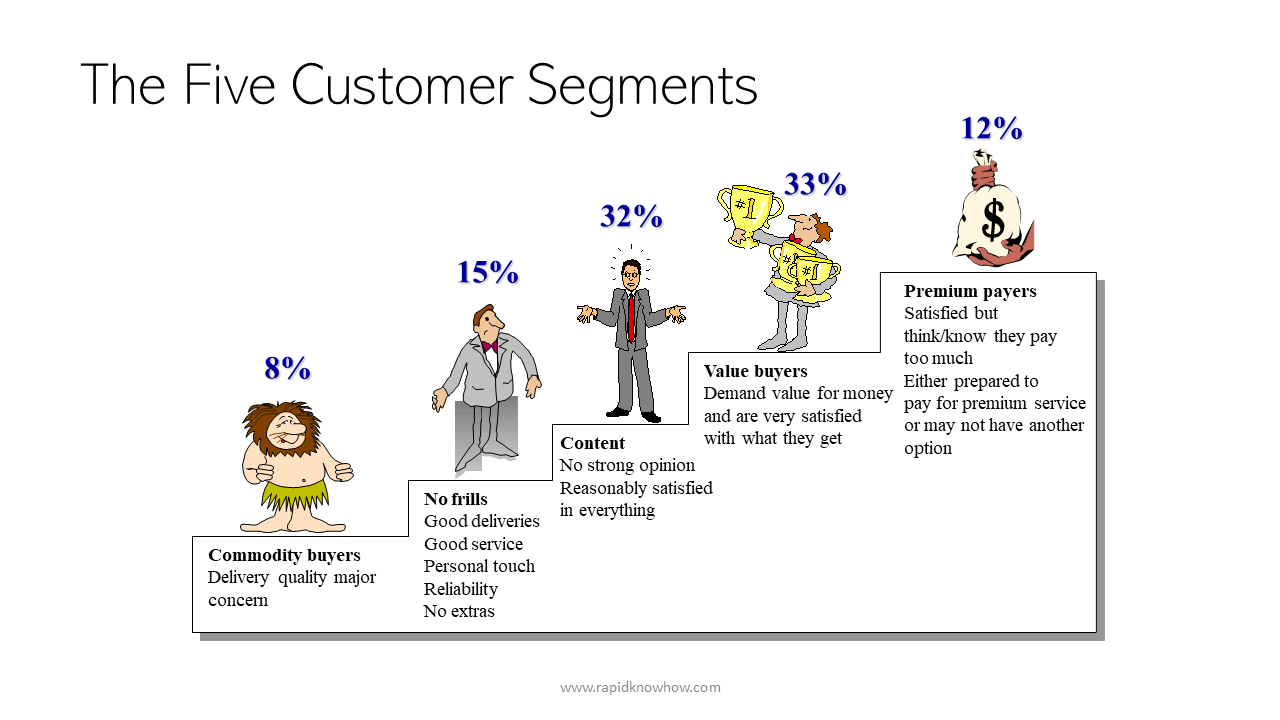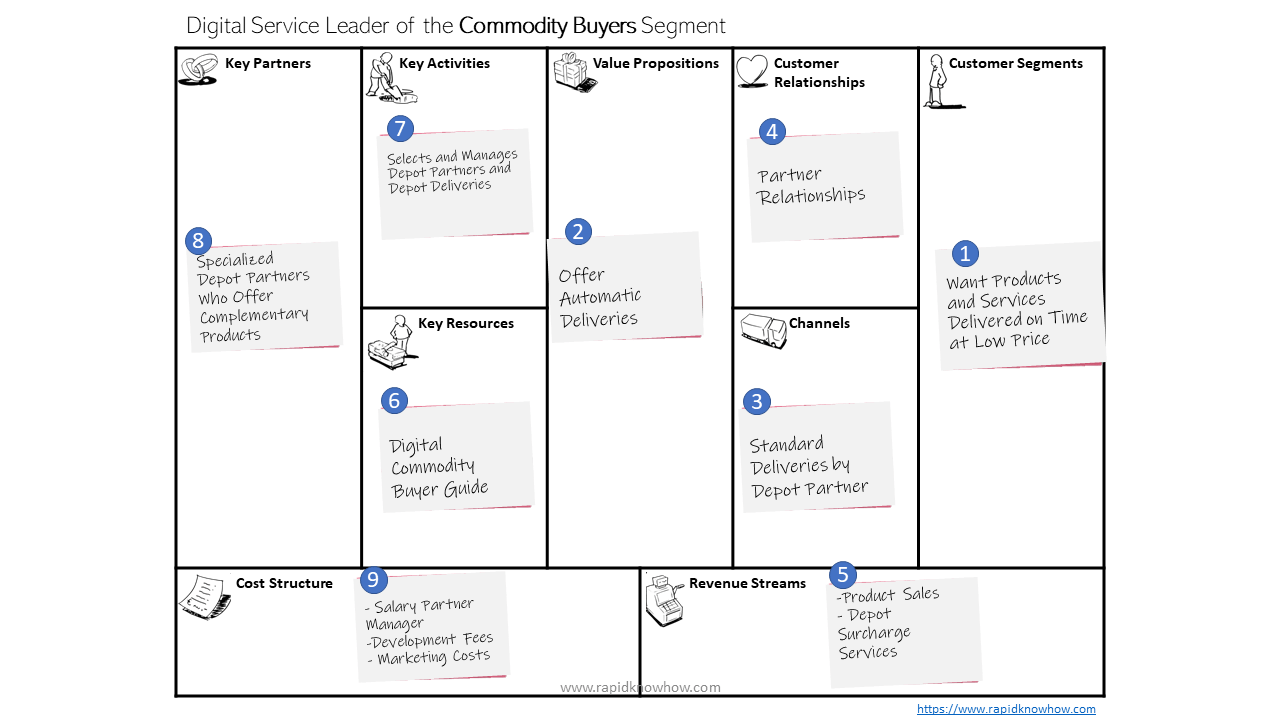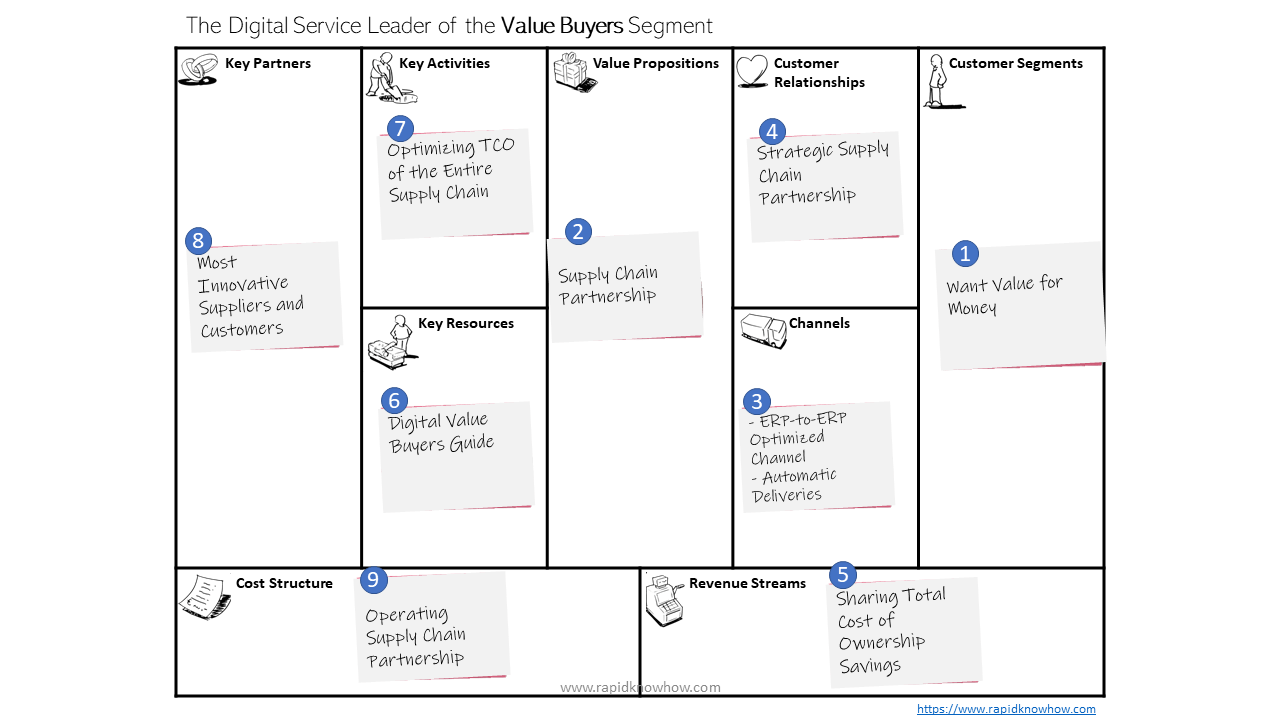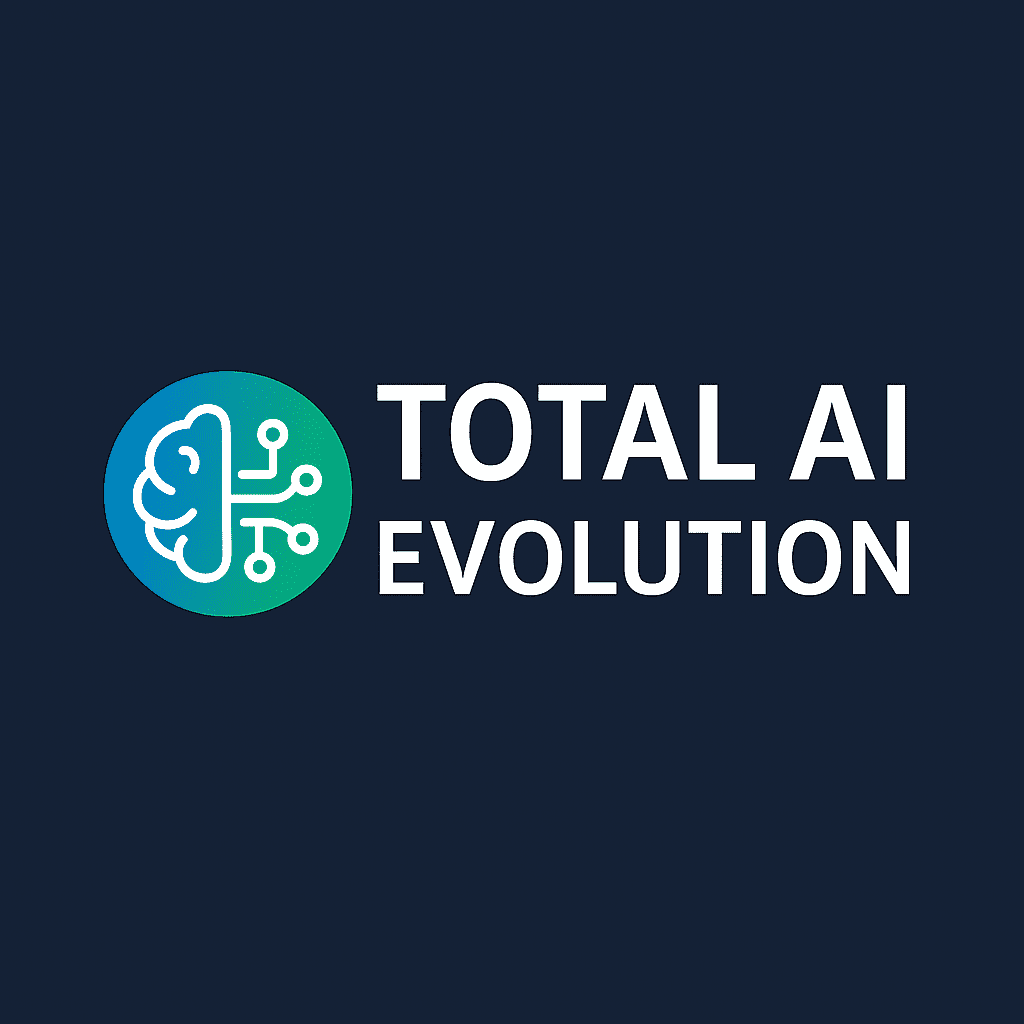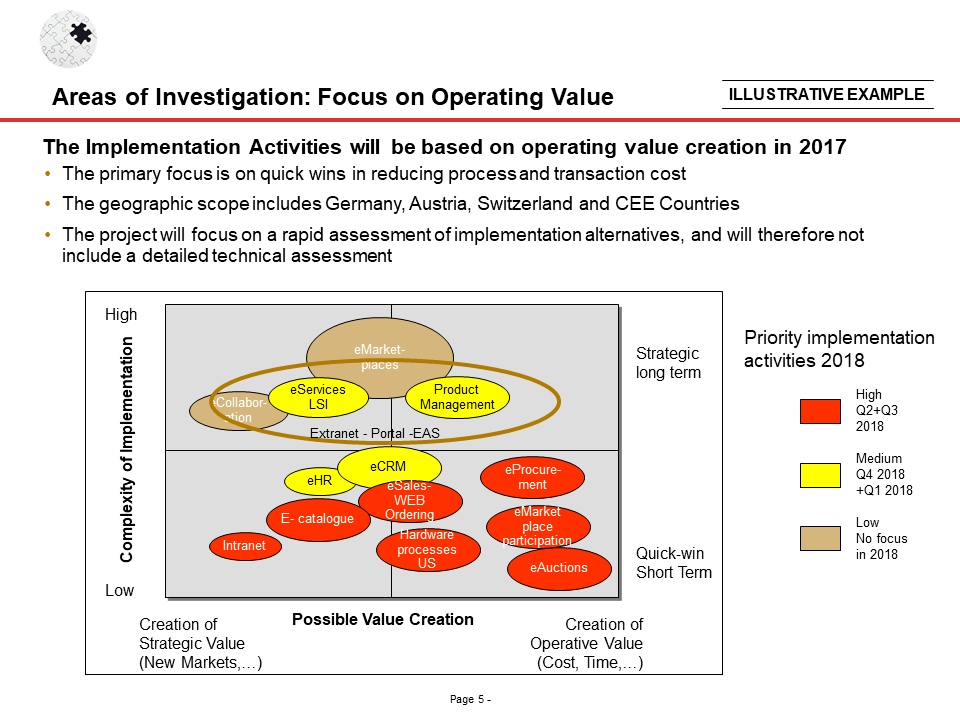Hello and Welcome!
So today we’ll create digital service leadership models for the Industrial Gas industry.
The basis is an extensive international survey among more than four thousand respondents, in eight countries.
They reveal their needs and wants from a competent industrial gas service provider.
We’ve developed business models that demonstrate how a digital service leader may fulfill their wants rapidly.
Let’s get started.
The Goal
The goal of the short strategy post is to create digital leadership models for each of the defined key segments.
We created five clusters and outlined them based on how the respondents of the customer survey answered the questions.
Next, we designed the business models which describes the rationale of how your organization creates, delivers and captures value.
The Business Model
First, we’ll create the service leadership model for the industry
1.Define Segment – we outline five distinctive segments , make a market survey, create clusters and design profiles
2.Create Profile – we define segments , and outline their needs and wants and craft our value proposition
3.Craft Business Model – Finally, we’ll create the customer profiles and the business offer, lastly we design a business model for each distinctive segment.
The Five Customer Segments
Here is the summary of the five customer segments.Each segment has a distinctive need from his industrial gas supplier.
While the basic requests on a competent supplier are:
-Order is on-time
-Invoice is accurate
-Order is complete
A next customer segment wants more on personal touch and reliability.
While a third segment is just content with what they get.
A fourth segment want value for money and puts strong emphasize on getting value for money.
The last group think they might pay too much because they currently does not see the real value offered.
We’ll demonstrate two specific customers segments by creating distinctive business models for each segment.
Commodity Buyers
Profile of Commodity Buyers
The Commodity Buyers do not care much about customer service, they mainly want their product delivered on time at a cheap price.
The Key word is LOW PRICE
Your main action: Minimize your effort and focus on delivery quality and completeness
Business Model for The Digital Service Leader of the Commodity Buyer Segment
Discover the nine steps to create, deliver and capture value as Digital Service Provider for the Commodity Buyer Segment.
1.Customer Segment – Commodity Buyers: They Want Products and Services Delivered on Time
2.Value Proposition – Best Digital Service Providers Offer Automatic Deliveries
3.Channels – Service Providers Establish Standard Deliveries Executed by their Local Depot Partners
4.Customer Relationships – Customers have close Relationships with their Local Depot Partner which They Know and Trust
5.Revenue Streams – The Producer Earns Product and Service Sales while the Depot Partner earns a Depot Surcharge for each product unit.
6.Key Resources – The Digital Commodity Guide outlines the policy, the business concept and how the partners execute the commodity business model successfully.
7.Key Activities – The producer has an assigned depot partner manager who selects and manages the depot partner networks as well as the depot delivery channel.
8.Key Partners – Key partners are preferable resellers of complementary equipment, manifolds and related services .
9.Cost Structure – Main costs occur for the salary of the partner manager development fees and marketing costs.
Value Buyers
Profile of Value Buyers
The Value Buyers appreciate the service they get and think they get good value for money.
The Key word is VALUE FOR MONEY
Your main action : Sell Your capabilities and value added services
Business Model for The Digital Service Leader of the Value Buyer Segment
Discover the nine steps to create, deliver and capture value as Digital Service Provider for the Value Buyer Segment.
1.Customer Segment – Value Buyers: They Want Value for Money
2.Value Proposition – Best Digital Service Providers Offer Supply Chain Partnerships
3.Channels – Service Providers Establish ERP-to ERP Optimized Supply Channels and Automatic Deliveries
4.Customer Relationships – Either the Customer or the Supplier Drives the Process of Establishing Strategic Partnerships.
5.Revenue Streams – The Supply Chain Partners Share Total Cost of Ownership Savings .
6.Key Resources – The Digital Value Buyers Guide outlines the policy, the business concept and how the strategic partners execute the supply chain business model successfully.
7.Key Activities – The Supply Chain Experts create and manage the entire supply chain aiming at lowest total cost of ownership .
8.Key Partners – Key partners are specialized supply chain optimizer providers from most innovative suppliers and customers .
9.Cost Structure – Main costs occur for the salary of the supply chain experts, development fees and marketing costs.
Get Started
Congratulation
So today we’ve learned how digital service leaders create, deliver and capture value to become the digital service leader in their focus sector rapidly.
Following the guidelines , you’ll offer tailored solutions to the need of five distinctive customer segments and become the digital service leader in your geographical region and focus segments rapidly.
Now it’s Your Turn. Let’s get started.



